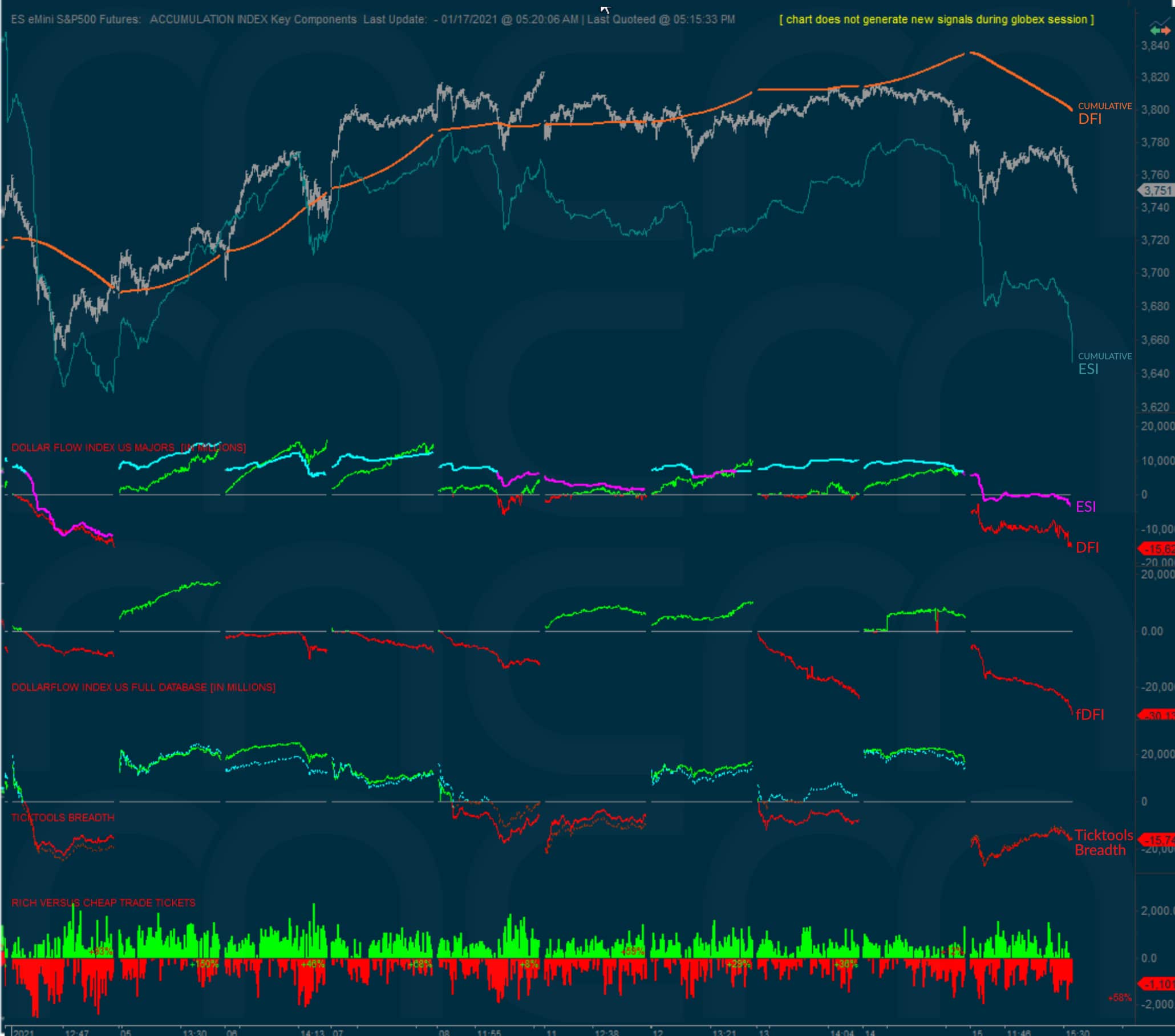EXECUTION SENTIMENT INDEX
Market Emotions Internals Flows
Execution Sentiment Index represent a significant step toward visualizing executions in terms of emotion, internal, and flow feedback. This suite of indexes provides a unique view into market activity and the most exciting complement to each other.
For example, the dollar-weighted Execution Sentiment Index represents a new way to look at quantifying committed market participation versus uncommitted or minority involvement and inclination or desire to buy or sell. The above chart is the Execution Sentiment Index with its component indexes. ESI is in two forms DAILY and CUMULATIVE (shown over price) on the lower studies are the daily versions that reset to zero at the start of every cash session
This information also provides DollarFlow analytics that track the amount of net dollars liquidating or allocating to risk markets. There are the large cap views of DFI and also broad market view - which a very useful tools to profile participants actions in markets. Allocating broadly or to large cap or liquidating large cap and allocating broadly for example.
Trade tickets analysis gives feedback on the buyer or seller tickets seeking and giving market liquidity so its easy to see when large buyers or sellers are beginning to transact in market. Also, to assess when price highs or lows are transacting with decreasing real participation
Execution Sentiment Index & Components
The Execution Sentiment Index allows a detailed view of the trading done based on ticket and trade execution. This allows a significant evaluation of the market participant behavior based on compositing types and quantity of trade executions.
When combined with the analysis of the component tools like actual dollars added or withdrawn (DFI) from markets, it is possible to see details underlying the market's character in ways that no other tool can quickly provide. For example, it is possible to have an extreme Execution Sentiment Index occurring into a price low and dropping prices signaling activity by investors appearing intensely on the order book's ask side and in high quantity - therefore a potential sign of accumulation/inflection point for reversal.
It is possible to ascertain how many dollars were net added to (or subtracted from) the markets over a specific period and confirm Execution Sentiment Index feedback.
Also, it is possible to estimate the actual asses sizes of the liquidity seeing/giving trade tickets that transact - this is especially useful because an abundant amount of small-sized trade tickets and a lack of large-sized traders can quickly point to a lack of conviction/participation in the market activity.

